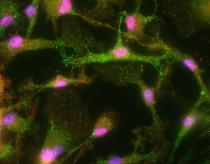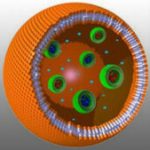American scientists have successfully regenerated retinal cells in mammals. Mice tests might open up possibilities for novel treatments for human eye diseases.

Müller glia cells in the retina. Picture: sciencedaily.com.
The retina, which is located in the back of the eye, is in charge of converting light into nerve impulses to the brain.
Previous research has shown that Müller glia, a kind of retinal cell, can be produced in vitro. “This sort of cell appears in all vertebrate retinas, including humans,” said Tom Reh, a University of Washington expert (USA).
Birds, like many other warm-blooded mammals, have the ability to repair retinal cells. However, fish, which are cold-blooded animals, can create all types of retinal cells. Unfortunately, it is difficult to replicate this sort of cell in mice.
The researchers put a substance into the mice’s eyes that eliminates ganglion (nerve cells on the surface of the retina) and amacrine cells. They then injected many additional substances, including growth hormone and insulin, into the mice’s eyes to stimulate the division of Müller glia cells.
Müller glia cells have greater space to flourish then that ganglion and amacrine cells have been eliminated. Some cells die within a few weeks, whereas others transform into amacrine cells and survive for at least 30 days.
Tom believes that these findings will aid scientists in developing cures for blindness and reduced vision caused by retinal damage, such as macular degeneration.










